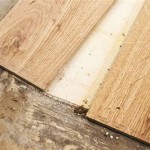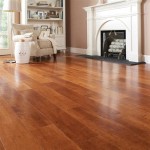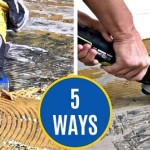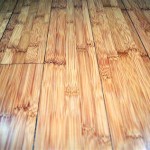How to Remove Vinyl Adhesive From a Cement Floor
Removing vinyl adhesive from a cement floor can be a challenging task, often requiring patience and the application of the correct techniques and tools. The adhesive, typically left behind after vinyl flooring removal, can create an uneven and unsightly surface, hindering the installation of new flooring or the restoration of the original concrete appearance. This article will provide a comprehensive guide to effectively remove vinyl adhesive from cement, covering various methods and essential safety considerations.
The difficulty of removing vinyl adhesive often depends on factors such as the type of adhesive used, the age of the installation, and the porosity of the concrete floor. Older adhesives tend to harden and become more brittle, making them difficult to dissolve. Furthermore, porous concrete can allow the adhesive to penetrate deeper into the surface, increasing the removal efforts. Therefore, understanding these factors is crucial for selecting the appropriate removal method.
Before starting any adhesive removal process, it is essential to prepare the work area. This involves ensuring proper ventilation, wearing appropriate safety gear, and protecting surrounding surfaces. Adequate ventilation is crucial, especially when using chemical solvents, as these can release harmful fumes. Safety gear, including gloves, eye protection, and a respirator, will protect against skin irritation, eye damage, and respiratory issues. Covering nearby walls and furniture will prevent accidental damage from splashes or debris.
Key Point 1: Identifying the Type of Adhesive
The first step in removing vinyl adhesive is to identify the type of adhesive used. While this might not always be straightforward, understanding the adhesive's characteristics can significantly influence the choice of removal strategy. Some common types of vinyl adhesives include water-based, solvent-based, and epoxy-based. Water-based adhesives are generally easier to remove compared to solvent-based or epoxy-based adhesives.
Visual inspection can provide clues about the adhesive type. Water-based adhesives often appear as a thin, milky residue, while solvent-based adhesives may have a thicker, rubbery consistency. If the adhesive is old and brittle, it might be difficult to determine its original type based on appearance alone. In such cases, testing a small, inconspicuous area with different solvents or heat can help identify the most effective approach.
Another method of identifying the adhesive is to consult any available documentation from the original flooring installation. If documentation is unavailable, contacting a flooring professional or adhesive manufacturer may provide valuable insights. Knowing the specific type of adhesive can streamline the removal process and minimize the risk of damaging the concrete floor.
Once the adhesive type is preliminarily identified, testing a small area is crucial. Obtain a small amount of mineral spirits, acetone, and water. Test a small section of the adhesive with each solvent, allowing each to sit for a few minutes. Observe which solvent softens or dissolves the adhesive most effectively. This test will provide a good indication of the adhesive's composition and the most appropriate removal method.
Key Point 2: Mechanical Removal Methods
Mechanical removal methods are often the first approach to consider, as they avoid the use of potentially harmful chemicals. These methods involve physically scraping, grinding, or sanding the adhesive from the concrete surface. While mechanical methods can be labor intensive, they offer a more controlled and environmentally friendly alternative to chemical solvents.
One common mechanical method involves using a floor scraper. This tool, typically featuring a long handle and a flat, sharp blade, is used to manually scrape the adhesive from the concrete. A floor scraper is particularly effective for removing large pieces of adhesive or thick layers of residue. The blade angle and pressure applied are crucial for achieving optimal results without damaging the concrete surface. Regularly sharpening the blade will maintain its effectiveness and prevent unnecessary effort.
For larger areas or stubborn adhesive residue, a floor grinder can be used. Floor grinders are equipped with abrasive pads or diamond grinding wheels that effectively remove adhesive while smoothing the concrete surface. When using a floor grinder, it is essential to select the appropriate grinding pad or wheel for the specific type of adhesive and concrete. Start with a coarse grit and gradually move to finer grits to achieve a smooth, uniform finish. Dust collection systems are highly recommended when using floor grinders to minimize airborne particles and maintain a clean work environment. Renting a floor grinder from a local equipment rental company is a viable option for smaller projects.
Another mechanical method involves using a concrete scarifier. This tool uses rotating cutting wheels to chip away at the adhesive and the concrete surface. Scarifiers are more aggressive than floor grinders and are best suited for removing thick layers of adhesive or addressing heavily damaged concrete. Due to their aggressive nature, scarifiers should be used with caution to avoid excessive removal of concrete. Safety gear, including a respirator and ear protection, is essential when operating a concrete scarifier.
When using any mechanical removal method, proper technique is crucial. Applying consistent pressure and maintaining a steady pace will ensure uniform removal and prevent gouging or unevenness on the concrete surface. Regularly inspect the concrete for any signs of damage and adjust the technique accordingly. After mechanical removal, the floor should be thoroughly cleaned to remove any remaining debris and dust.
Key Point 3: Chemical Removal Methods
Chemical removal methods involve using solvents or adhesive removers to soften or dissolve the adhesive, making it easier to scrape or wipe away. While chemical methods can be effective, they require careful handling and adherence to safety precautions. It is essential to select a chemical remover that is compatible with the type of adhesive and the concrete surface.
Many adhesive removers are available in liquid or gel form. Liquid removers typically penetrate the adhesive more quickly, while gel removers are better suited for vertical or uneven surfaces, as they tend to cling better. The application method varies depending on the product, but generally involves applying a generous layer of the remover to the adhesive and allowing it to dwell for a specified period. The dwell time allows the chemical to break down the adhesive, making it easier to remove.
Common chemical solvents used for removing vinyl adhesive include mineral spirits, acetone, and citrus-based removers. Mineral spirits are a relatively mild solvent that can be effective for removing water-based adhesives. Acetone is a stronger solvent that can dissolve solvent-based and epoxy-based adhesives. Citrus-based removers are a more environmentally friendly option, although they may require longer dwell times. Before using any chemical solvent, consult the manufacturer's instructions and safety data sheet (SDS) for proper handling and disposal procedures.
When using chemical removers, proper ventilation is crucial. Open windows and doors or use a ventilation fan to ensure adequate airflow. Wear appropriate safety gear, including gloves, eye protection, and a respirator, to protect against skin irritation, eye damage, and respiratory issues. Avoid prolonged exposure to chemical fumes and ensure that the work area is free from ignition sources.
After the dwell time, the softened adhesive can be scraped or wiped away using a floor scraper or a clean cloth. If the adhesive is particularly stubborn, a second application of the remover may be necessary. Once the adhesive is removed, the concrete surface should be thoroughly cleaned with a neutral cleaner to remove any remaining chemical residue. Rinse the surface with clean water and allow it to dry completely before applying any new flooring or coatings.
Another chemical approach utilizes heat guns. Heat guns can soften the adhesive which enables easier scraping. Apply low heat settings initially to avoid damaging the concrete. Use a scraper immediately following the heat application to remove the softened adhesive. Move the heat gun consistently to avoid overheating the concrete. Ensure adequate ventilation, and wear appropriate heat-resistant gloves.
Always research and understand local regulations regarding the disposal of chemical waste. Many chemical removers and solvents are considered hazardous waste and require special disposal methods. Contact your local waste management authority for guidance on proper disposal procedures. Proper disposal helps protect the environment and ensures compliance with applicable regulations.
Regardless of the method chosen, patience and persistence are key to effectively removing vinyl adhesive from a cement floor. Start with a small test area to determine the most effective approach, and always prioritize safety throughout the process. With the right tools, techniques, and safety precautions, removing vinyl adhesive can be successfully accomplished, leaving a clean and prepared surface for future flooring projects.

The Fastest Way To Remove Bonded Vinyl Flooring From Concrete

How To Remove Carpet Glue From Concrete 4 Proven Ways Network

How To Remove Linoleum Adhesive From A Concrete Floor

How To Remove Adhesive From Concrete Floors 5 Diy Ways Get Glue Off

How To Remove Adhesive From Concrete Floors 5 Diy Ways Get Glue Off

How To Remove Carpet Glue From Concrete 4 Proven Ways Network

How To Remove Carpet Glue From Concrete Floor Step By Guide

How To Finish Removing Linoleum Adhesive For Tile On Concrete Floor Hometalk

Best Ways To Take Out Even Impossible Remove Glue From Floors

How To Remove Carpet Vinyl Adhesive The Easy Way
See Also







